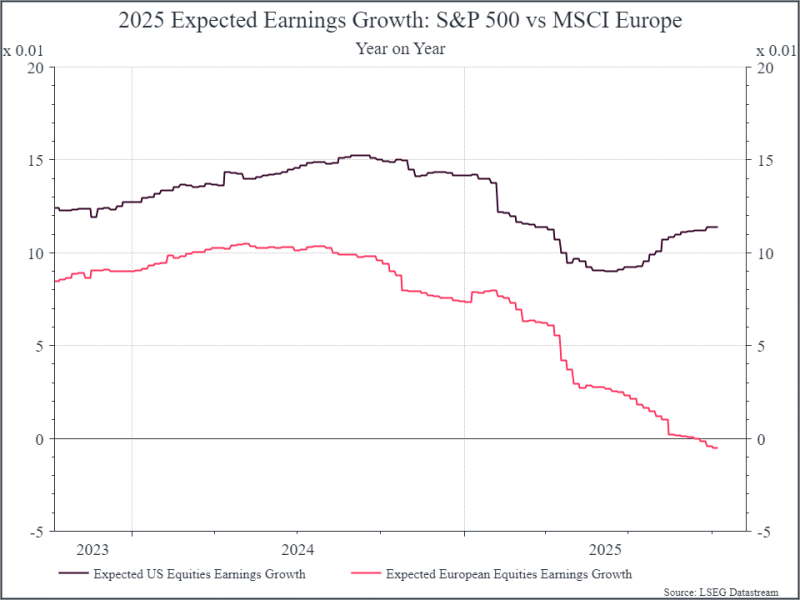After a strong performance from US equities in the third quarter, we’re turning our attention to the key drivers for the months ahead.
There’s been a lot of discussion about the huge investments that the big tech companies are making in data centres for Artificial Intelligence. Some analysts estimate capital spending by so-called hyperscalers could reach $1.2 trillion by 2029.
This has raised questions about what sort of return on investment we could expect to see. There’s a possibility that these businesses could over-invest, building capacity that may take longer to fill than they expect. This has been a feature of previous technology shifts – notably the booms in railroad investment in the 19th century and the rapid build-out in telecom fibre in the late 1990s.
But building that capacity takes time and it’s tough to assess what the demand picture will look like two or three years from now. So investors will be looking for signals that demand for data, notably for Artificial Intelligence, is proving as robust as many have hoped. The stronger the demand, the more likely it is that these businesses will see a decent return on all the investments that they’re making.
And that brings us to the third quarter earnings season getting underway in the US. In one sense, you could argue that we shouldn’t pay too much attention to quarterly results, particularly in the context of a new technology that could transform the next few decades. On the other hand, with expectations already high and capex plans underway, investors will already be looking for signs that the optimism around AI is really going to translate into profit growth sooner rather than later, particularly in the US.
The good news is that US corporates, driven by the tech space, have continued to perform well. We saw a very solid earnings season in the second quarter of the year and that’s been reflected in earnings expectations for 2025. The chart below shows expectations for this year earnings growth for the US and Europe over time.

We can see that earnings expectations in Europe have fallen sharply in recent months. Analysts now expect no earnings growth in 2025 for European stocks.
In contrast, analysts are still expecting double-digit earnings growth for US companies. In the tech sector specifically, the most recent revenue release from TSMC, the Taiwanese chip manufacturer, showed a robust growth for the period July-September, and pointed to continued strong demand in the sector.
For now, investors seem as focused on the US job market and the ongoing government shutdown as they are on expectations for Artificial Intelligence. Still, it’s a reminder that, despite all the talk of long-term investment and the secular trend in Artificial Intelligence, investors will be looking at quarterly earnings for signs that all those investments will prove to be money well-spent.
Invest in US shares with Moneyfarm
Ready to tap the US market? US equities can offer exposure to some of the world’s most innovative companies, while also coming with risks such as higher valuations, potential volatility and sensitivity to economic or political events.
With Moneyfarm DIY Investing you can do it via your Stocks & Shares ISA or GIA – simple pricing, integrated analytics, hassle-free tax admin (we handle the W-8BEN; inside an ISA your returns are tax-free), transparent GBP↔USD conversion, and everything in one place (shares, ETFs and managed funds). Or go curated with our Special Collections – Tech Titans, The AI Revolution, California Dreaming, Electric Mobility, and Latest IPOs – designed and monitored by our Asset Allocation team to help you explore opportunities with confidence. But remember that themed investments are more concentrated and may carry higher risk than a diversified portfolio.
This article is for information purposes only. It is not investment advice or a recommendation. Investments can fall as well as rise in value and you could get back less than you invest. Past performance is not a guide to future returns. Overseas investments may be affected by currency movements. Tax treatment depends on individual circumstances and may change. References to any company, index, ETF or fund are for illustration only. If you are unsure about an investment’s suitability you should seek advice from an authorised financial adviser.
*As with all investing, financial instruments involve inherent risks, including loss of capital, market fluctuations and liquidity risk. Past performance is no guarantee of future results. It is important to consider your risk tolerance and investment objectives before proceeding.





